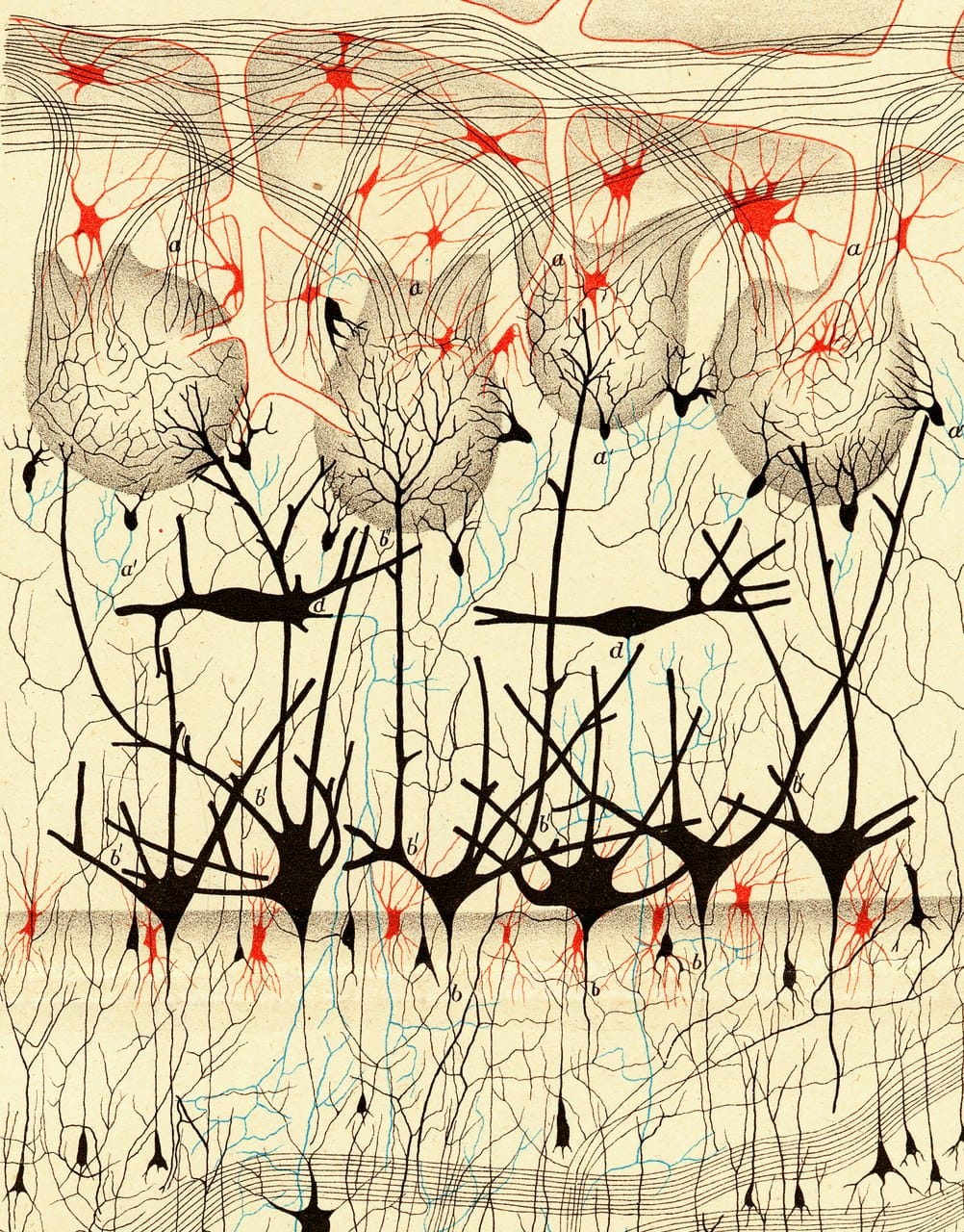Neuron doctrine

This is just one of many scientific illustrations by Camillo Golgi, who, along with Santiago Ramón y Cajal, helped advance the "'neuron doctrine', which put forward the concept of the nervous system as a composite of discrete individual cells"—though Golgi resisted the implications of his own findings even as they earned him a Nobel Prize along with Ramón y Cajal.
You can find more illustrations from both Golgi and Ramón y Cajal here. These drawings helped establish our understanding of the nervous system.
They also wouldn't look out of place hung on a wall to be admired for their color and line work.
Playing with Pictures: The Art of Victorian Photocollage
By Valery Oisteanu. ArtBlart.com.
Photography was still a new technology when the first collage makers, mostly "educated Victorian ladies," began experimenting with cutting up and repurposing the photos they received from friends, family, and suitors.
Beyond the mostly sedate (but sometimes strange) images included in this exhibition, what I found most interesting was the reminder that these women were experimenting with collage long before "the cubists, dadaists, constructivists and surrealists [adopted collage and exquisite corpse] as their own inventions, re-expressed in collective drawings, poetry and assemblages."
More:
- The Art Institute of Chicago has a page devoted to the exhibition where you can see many of these images, explore how these images and albums were created, and learn more about how they captures slices of Victorian life.
- The Met recorded two lectures related to the exhibition, including one from Elizabeth Siegel, the curator who developed the exhibit.